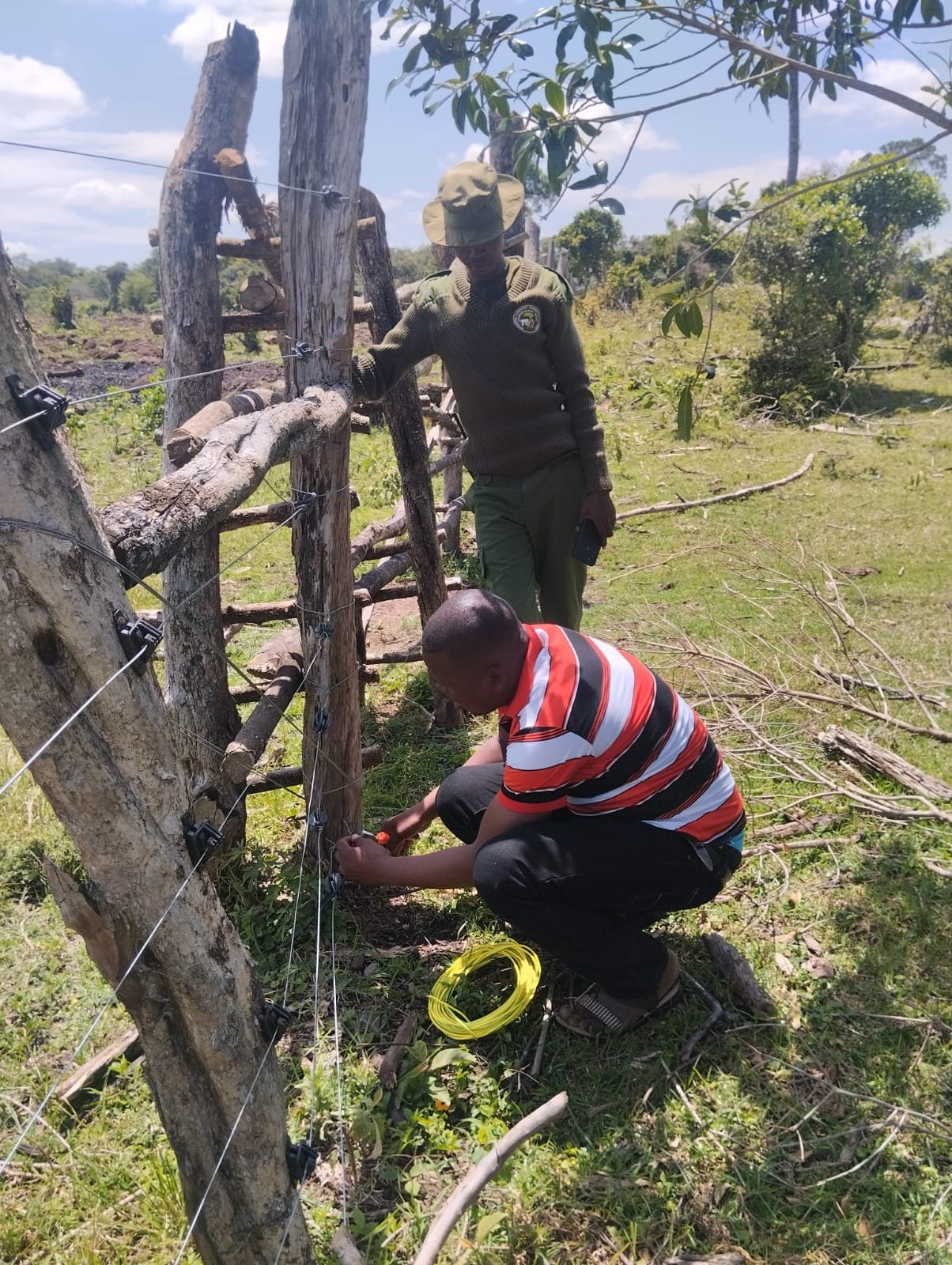Securing Safe Passage: The Battle Against Electric Fences in Pangolin Habitat
Rapid Response Saves a Pangolin: Community Action in Nyekweri
A Life Saved, A Lesson Learned
In early 2024, a landowner in Nyekweri reported a Giant Ground Pangolin caught on an electric fence. The Pangolin Project team responded within hours, deactivating the fence and safely freeing the animal. The pangolin was monitored for five days, showing no signs of injury—a victory for both conservation and rapid response efforts.
However, just months later, tragedy struck. In October 2024, a pregnant Giant Pangolin was killed on a fence-line, followed by another loss only days later. These heartbreaking deaths catalyzed immediate, large-scale action by The Pangolin Project and the local conservancies.
Pangolin death on electric fencing
Electrical technician removes electricity from bottom strands.
A Community Mobilized: Rapid Response to Fencing Dangers
Recognizing the urgency of the situation, The Pangolin Project, Kimintet, and Olorien Conservancies launched a multi-pronged response:
Emergency conservancy leadership meetings to address fencing risks and mitigation strategies.
High-impact advocacy at major public events, educating 570 people on wildlife-friendly fencing.
64 direct household visits, engaging landowners in conversations about de-electrification.
71 km of electric fencing modified or de-electrified, drastically reducing pangolin and wildlife casualties.
While some landowners remained hesitant, the rapid de-electrification of 29 fences in just one week demonstrated the collective power of community-driven conservation.
Understanding the Crisis: The Impact of Electric Fencing
Electric fences have spread rapidly across the Nyekweri Ecosystem since 2022, with over 100 km of electric fencing now in place. Originally erected to deter elephants and protect crops, these barriers have become a lethal threat to pangolins. Unlike other mammals, pangolins respond to danger by curling into a ball—a defense mechanism that makes them highly vulnerable to repeated electrocution.
In 2023, six electric fence-related pangolin deaths were recorded, and just two in 2024. Previous de-electrification efforts have slowed losses but two losses is still two too many,
Stories from the Ground: A Community’s Shift in Perspective
One of the landowners who lost a pangolin was devastated. He had explicitly instructed his fence technician to leave the lower wires un-electrified to protect pangolins, but workers managing livestock later reconnected them. Overwhelmed with regret, he immediately removed two strands of wire from his fence and reaffirmed his support for conservation efforts.
In contrast, another landowner who had been repeatedly asked to modify his fence refused, citing concerns over crop protection and security. These differing reactions underscore the ongoing challenge: conservation must provide viable solutions that align with landowners' needs.
A Future of Protection: Scaling Up Conservation Efforts
The Pangolin Project and its partners are taking long-term steps to address these threats at scale. Efforts include:
Securing 10,000 hectares for conservation and removing wire fences within this area through negotiated lease agreements.
Introducing wildlife-friendly fencing solutions that protect both property and endangered species.
Continuing community engagement through door-to-door education and public meetings.
Offering direct conservation incentives, ensuring landowners see tangible benefits from their participation in conservation efforts.
The Power of Collective Action
While the recent pangolin losses were devastating, the rapid response from the community gives hope for the future. In just days, a unified effort led to measurable change, proving that conservation is strongest when communities take the lead.
But this is just the beginning. To create lasting change, we must secure land, invest in alternative fencing solutions, and continue building trust with local landowners.
Be Part of the Solution
Landowners are stepping up, eager to sign conservation leases that will permanently remove dangerous fencing—but funding will determine how many agreements are possible. Your support can help secure safe habitats for pangolins and protect the rich biodiversity of Nyekweri.
💡 Help us take the next step. Donate today to safeguard the future of Kenya’s last Giant Ground Pangolins.



